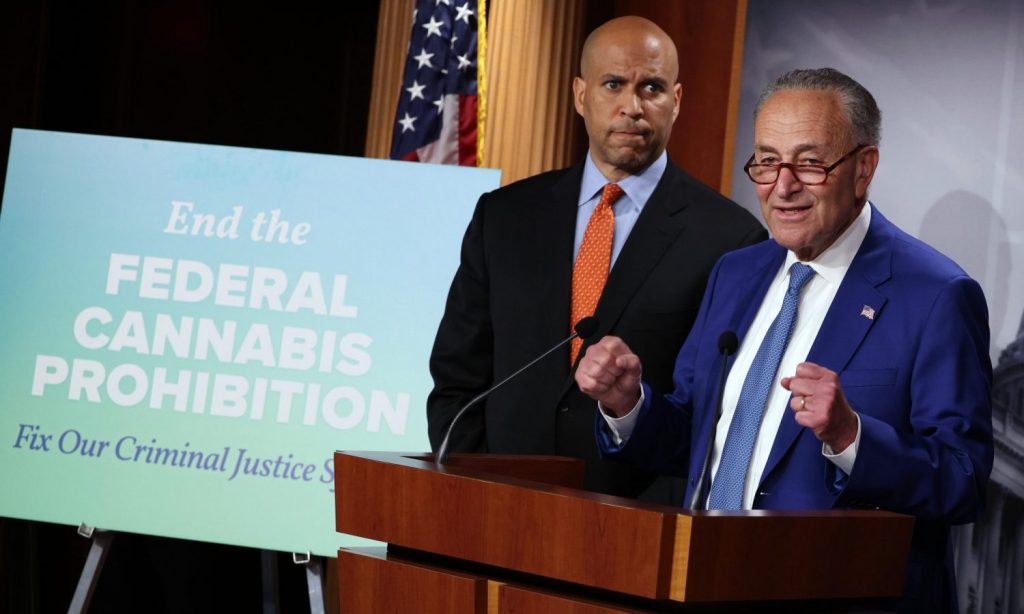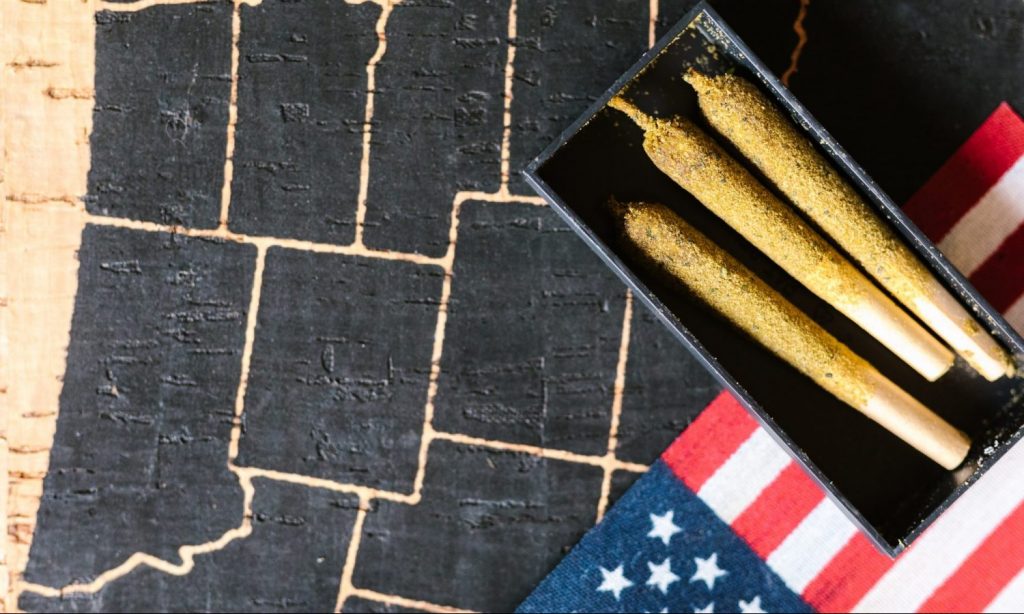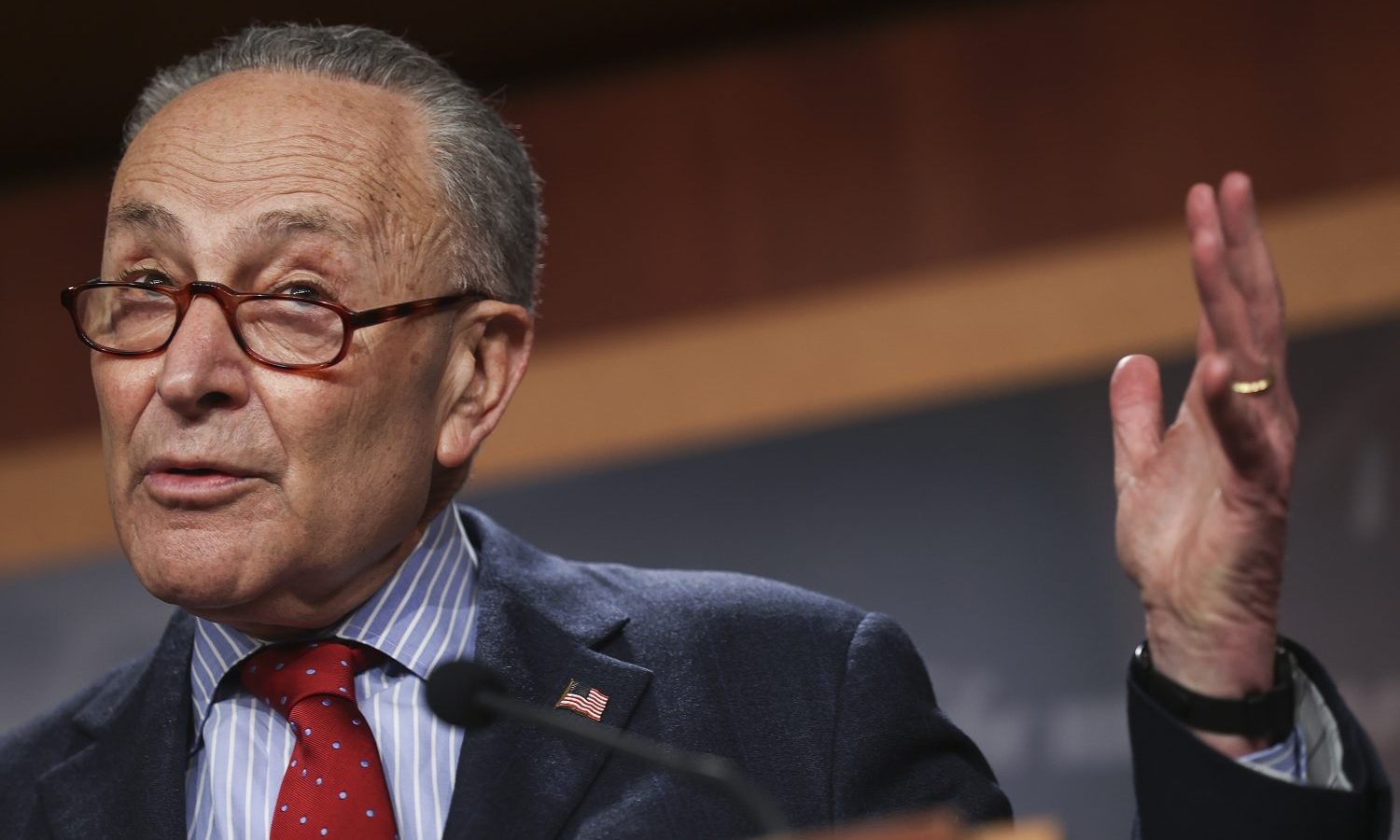It probably won’t pass, but it may be a harbinger of the bill that finally does. And it raises some fascinating questions for the future of cannabis in the U.S.
They finally did it! Senate Democrats — specifically, Majority Leader Schumer and Senators Cory Booker and Ron Wyden — finally released the much-anticipated cannabis reform bill previously known only as the “Schumer Bill”. Its official name, the Cannabis Administration & Opportunity Act or (if you’re a fan of acronyms the CAOA), is terrible (at best). How do you even pronounce “CAOA”? But what about the policies, you ask?
Before we dive into the weeds (get it?), we should take a minute to put the CAOA into political context. Few, if any, Capitol Hill observers expect the bill to pass as written. If you’ve been reading The Leaflet’s coverage of the ongoing cannabis saga on Capitol Hill, you’ll know that the CAOA was destined to be DOA — dead on arrival. The lack of response from the Biden Administration also speaks volumes, as the President seems unwilling to spend his political capital in support of the bill.
So, what is the cannabis industry to make of the CAOA? It probably won’t pass, but it may be a harbinger of the bill that finally does. And it raises some fascinating questions for the future of cannabis in the U.S.

Will Cannabis go Interstate and When?
You’ve likely heard of the “first mover” advantage — the theory that the first company to provide a new service or product gains an advantage over the competitors that come later. But because of the constantly shifting nature of the cannabis industry over the last decade, the companies that come first sometimes end up having a first mover disadvantage.
Because of its illegality under federal law, the cannabis industry has developed along state (not national) lines. If you have a cannabis dispensary in your town, the products sold there are made from cannabis grown and processed in your state. While a winemaker can grow its grapes in California, process them in Nevada and sell its wine in New York, state and federal laws prevent cannabis companies from doing the same. Thus, whenever an MSO sets up shop in a newly legal cannabis market (like New York or New Jersey), it has to build the infrastructure to sustain the business in that state. That requires an enormous amount of investment capital.
RELATED: Will Schumer’s Marijuana Legalization Bill Pass Before The End Of 2021?
So, what happens to all that investment (and all the jobs that go with it) if interstate cannabis commerce is suddenly legal? Newcomers to the industry could set up a single cultivation facility in California (or another state with ideal conditions for growing cannabis) and produce enough product to supply dispensaries throughout the country. (For example, Anheuser-Busch has only 12 breweries that make all the Anheuser-Busch beer consumed in the U.S.) In other words, full-on interstate commerce in cannabis could render many of the cultivation facilities obsolete.
Which brings us back to the CAOA. Section 111 of the CAOA would prohibit states from banning interstate transport of cannabis through its borders for lawful delivery in another state (hello Dormant Commerce Clause). In other words, it gives interstate cannabis commerce the greenlight, and could cause an enormous disruption to the industry — unless it’s modified to phase in interstate commerce over time.

Which is why many industry observers expect there to be some modifications to this provision because (i) states with existing state-legal cannabis industries will want to protect the jobs created within their borders, and (ii) full-on interstate commerce would likely be counterproductive to the CAOA’s social equity goals, as smaller operators could be overwhelmed by large, out of state competitors.
What Does FDA Involvement Mean for Cannabis?
Section 101 of CAOA would de-schedule cannabis and transfer agency jurisdiction to the FDA. What would FDA involvement mean for the future (and present) of cannabis? The proponents of the CAOA offer no clear answer.
The bill makes reference to the preservation of state “primacy”, but the FDA has its own standards for the approval of food and drugs, and heavily regulates the manufacturing, labeling and sale of the products that fall within its jurisdiction. Industry observers may recall the chilling effect that the FDA’s regulatory process had on what everyone assumed would be a robust CBD industry.
In the 2018 Farm Bill, Congress de-scheduled CBD and gave farmers the green light to cultivate and sell hemp and CBD across the country. And while businesses were ready to put CBD into everything from Ben & Jerry’s to Coca Cola, the FDA’s excruciatingly long and opaque regulatory process ground the once promising industry to a screeching halt. Whether the FDA will make the same mistake with cannabis remains to be seen.
Will the Federal Government Listen?
All of this leads to one big meta-question more important than any other: Will the federal government listen? In the summary of the CAOA released with the bill, its sponsors request “comments from stakeholders and members of the public.”
But the CAOA raises a multitude of thorny questions, many of which will require thoughtful policy solutions. Will the proponents of the CAOA (whose hearts seem to be in the right place) actually accept comments (and not ignore them)? Time will tell. But let’s hope they do, because it’s the only way to enact a cannabis reform bill that strikes a balance between liberating the industry and smothering it.
(For more information contact Mitch@dfmklaw.com and Justin@dfmklaw.com.)
This article originally appeared in Feuerstein Kulick’s monthly cannabis newsletter, The Leaflet, which you can subscribe to here. For more information you can contact Rich at rich@dfmklaw.com or (201) 410-4737, or email The Leaflet at theleaflet@dfmklaw.com.


